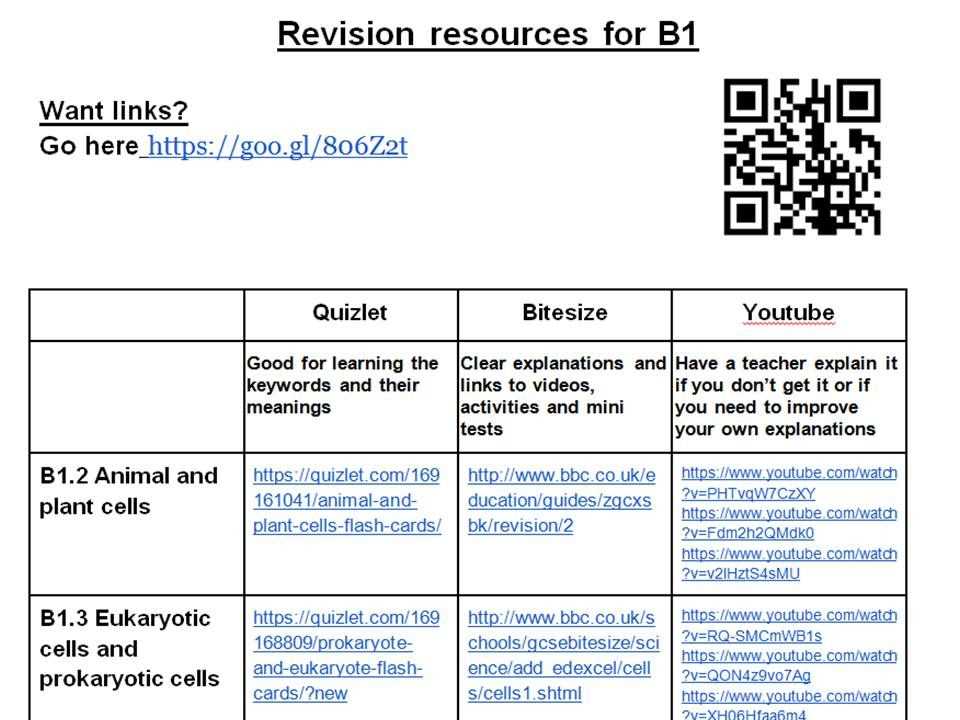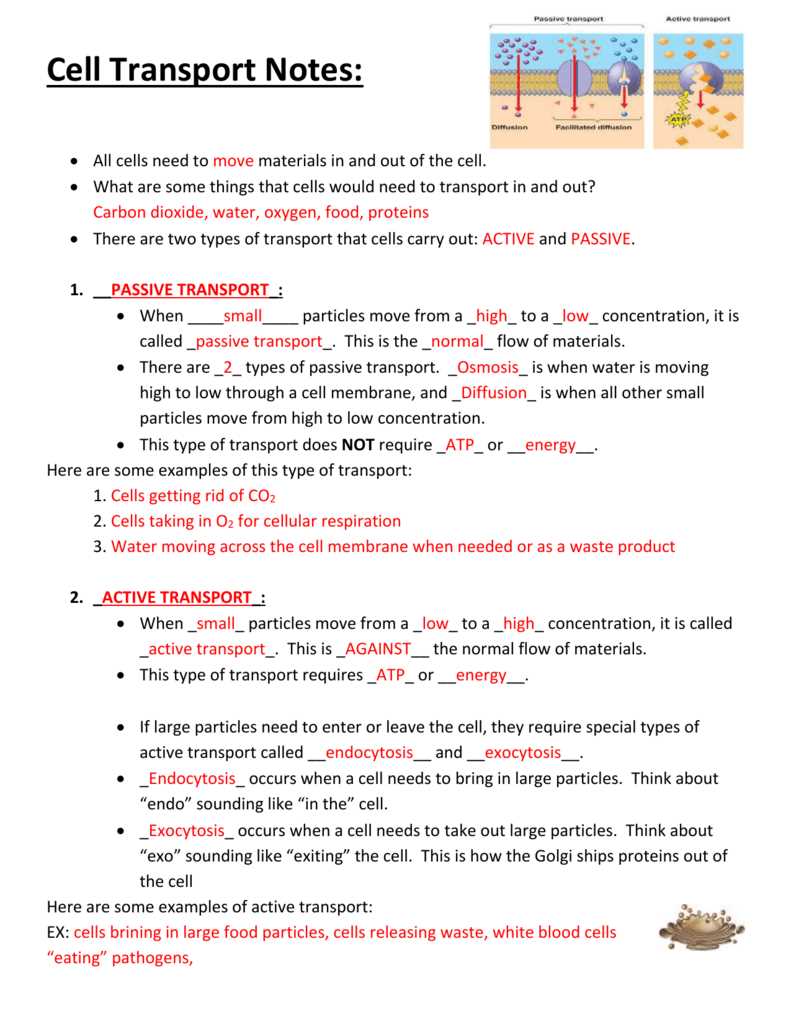
Understanding how cells transport various substances across their membranes is a fundamental concept in biology. Transport mechanisms such as diffusion, osmosis, and active transport play crucial roles in maintaining the balance of molecules and ions inside and outside the cell. In this study guide, we will explore the key principles and processes involved in cell transport and provide answers to commonly asked questions.
Diffusion is the spontaneous movement of molecules from an area of higher concentration to an area of lower concentration. This process occurs across the cell membrane and is essential for the movement of gases, such as oxygen and carbon dioxide, as well as small, nonpolar molecules. Osmosis, on the other hand, is the diffusion of water molecules across a selectively permeable membrane in response to concentration gradients.
Active transport, unlike diffusion and osmosis, requires the input of energy in the form of ATP to move molecules against their concentration gradients. This process is necessary for the uptake or elimination of specific molecules, such as ions, sugars, and amino acids, and is facilitated by transport proteins embedded in the cell membrane.
By understanding the mechanisms of cell transport, scientists can better comprehend how substances enter and exit cells, and how cells maintain homeostasis. This study guide will serve as a valuable resource in reviewing the fundamental concepts of cell transport and clarifying any questions or confusions you may have.
Overview of cell transport
The cell is the basic unit of life and it needs to exchange materials with its environment in order to survive and function properly. This process is known as cell transport. Cell transport can be divided into two main types: passive transport and active transport.
Passive transport refers to the movement of molecules across the cell membrane without the requirement of energy. There are three types of passive transport: diffusion, osmosis, and facilitated diffusion.
- Diffusion is the movement of molecules from an area of high concentration to an area of low concentration. It occurs until equilibrium is reached.
- Osmosis is the diffusion of water molecules across a selectively permeable membrane. It is driven by the concentration gradient of solutes.
- Facilitated diffusion is the movement of molecules across the cell membrane with the help of specific carrier proteins. It does not require energy.
Active transport, on the other hand, is the movement of molecules across the cell membrane against the concentration gradient and it requires energy in the form of ATP (adenosine triphosphate). Active transport is carried out by specific transport proteins called pumps. One example of active transport is the sodium-potassium pump, which helps maintain the correct concentrations of sodium and potassium ions inside and outside the cell.
In summary, cell transport is crucial for the survival and function of cells. Passive transport allows for the movement of molecules without the use of energy, while active transport requires energy to move molecules against the concentration gradient. Understanding the mechanisms of cell transport is essential in the study of cellular processes and the functioning of organisms.
Diffusion
Diffusion is a process by which molecules move from an area of high concentration to an area of low concentration. It is a passive transport mechanism that allows substances to spread out and distribute evenly throughout a medium, such as a cell or a solution.
In diffusion, molecules move randomly due to their thermal energy, constantly colliding with each other. As a result of these collisions, molecules gradually spread out from regions of high concentration to regions of low concentration until equilibrium is reached. This means that there is an equal distribution of molecules throughout the system.
Factors affecting diffusion:
- Concentration gradient: The greater the difference in concentration between two areas, the faster the rate of diffusion.
- Temperature: Higher temperatures increase the speed of molecules, leading to faster diffusion.
- Molecular size: Smaller molecules diffuse faster than larger ones, as they are able to move through spaces more easily.
- Medium viscosity: A more viscous medium slows down diffusion, as molecules have to overcome greater resistance to move.
Examples of diffusion in cells:
- Oxygen and carbon dioxide exchange: In the process of respiration, oxygen diffuses into cells, while carbon dioxide diffuses out of cells.
- Waste removal: Waste products, such as urea, diffuse out of cells and are excreted from the body.
- Nutrient uptake: Nutrients, such as glucose, diffuse from the digestive system into the bloodstream and then into cells.
Overall, diffusion is an essential process for the functioning of cells, allowing substances to move in and out of cells and maintain homeostasis within the body.
Osmosis
Osmosis is a type of passive transport that occurs in cells. It is the movement of water molecules from an area of higher concentration to an area of lower concentration across a selectively permeable membrane. It plays a crucial role in maintaining the water balance in cells and is essential for their survival.
Osmosis relies on a concentration gradient. When there is a difference in the concentration of solutes on either side of a cell membrane, water molecules will move across the membrane to equalize the concentration. This process continues until the concentration is balanced on both sides.
In osmosis, the direction of water movement is determined by the relative concentration of solutes. If the solute concentration is higher on one side of the membrane, water will move from the side with lower solute concentration to the side with higher solute concentration. This results in the side with higher solute concentration becoming more diluted and the side with lower solute concentration becoming more concentrated.
Osmosis is responsible for various important biological processes. It is involved in the uptake of water and nutrients by plant roots, the regulation of water balance in animal cells, and the movement of water in and out of cells. It also plays a role in maintaining the turgidity and rigidity of plant cells. Overall, osmosis is a fundamental process that helps cells maintain homeostasis and function properly.
Active transport
Active transport is a process in which substances are transported across the cell membrane against their concentration gradient, requiring the use of energy in the form of ATP. Unlike passive transport, which relies on the natural flow of molecules from an area of high concentration to an area of low concentration, active transport moves molecules against this natural flow, from an area of low concentration to an area of high concentration.
One example of active transport is the sodium-potassium pump, an integral protein found in the cell membrane of many cells. This pump uses ATP to move three sodium ions out of the cell and two potassium ions into the cell. By continuously pumping out sodium ions and bringing in potassium ions, the sodium-potassium pump helps to maintain the electrochemical gradient across the cell membrane, which is essential for many cellular processes such as nerve impulse transmission.
Another example of active transport is endocytosis, a process by which large molecules or particles are engulfed by the cell membrane and brought into the cell. There are two types of endocytosis: phagocytosis, in which solid particles are taken in, and pinocytosis, in which fluid droplets are taken in. Both types of endocytosis require ATP to power the movement of the cell membrane and the formation of vesicles that transport the engulfed material.
In conclusion, active transport is a crucial process for cells to maintain the proper concentration of molecules and ions inside and outside the cell. It requires energy in the form of ATP and is essential for processes such as maintaining the electrochemical gradient and bringing in essential molecules or particles. Whether it is through the action of pumps or the process of endocytosis, active transport is essential for the proper functioning of cells.
Endocytosis
Endocytosis is a cellular process by which a cell takes in substances from its environment by engulfing them into its plasma membrane. This process is essential for the cell to obtain nutrients, regulate its internal environment, and remove waste products. There are three main types of endocytosis: phagocytosis, pinocytosis, and receptor-mediated endocytosis.
Phagocytosis, which literally means “cell eating,” is the process by which large particles or microorganisms are engulfed by the cell. In this process, the cell extends its plasma membrane around the particles and forms a pocket called a phagosome. The phagosome then fuses with lysosomes, which contain enzymes that break down the ingested particles. The resulting products are then used by the cell for energy or excreted as waste.
Pinocytosis, on the other hand, is the process by which the cell takes in small droplets of fluid from its surroundings. This process is important for the cell to obtain nutrients and regulate its internal environment. During pinocytosis, the plasma membrane forms small invaginations called vesicles that contain the fluid. These vesicles then fuse with other cellular compartments, such as endosomes, where the content is processed and either used by the cell or excreted.
Receptor-mediated endocytosis is a more specific form of endocytosis that involves the binding of specific molecules to receptors on the cell’s surface. These receptors are usually proteins that recognize and bind to specific substances, such as hormones, growth factors, or cholesterol. When these substances bind to their respective receptors, the receptors cluster together, and the plasma membrane invaginates to form a vesicle. This vesicle is then internalized into the cell and transported to specific cellular compartments, where the substance is either used by the cell or processed for degradation.
In summary, endocytosis is a crucial cellular process that allows cells to take in substances from their environment. Whether it is engulfing large particles through phagocytosis, taking in small droplets of fluid through pinocytosis, or selectively internalizing specific molecules through receptor-mediated endocytosis, this process plays a vital role in maintaining the cell’s functions and overall health.
Exocytosis

Exocytosis is a process by which cells release substances from their intracellular compartments to the extracellular space. It is an essential mechanism for cells to communicate with their environment and to regulate various physiological processes.
During exocytosis, vesicles containing the substances to be released are transported towards the plasma membrane. These vesicles fuse with the membrane, allowing the contents to be expelled into the extracellular space. This fusion is mediated by specific protein complexes, such as SNARE proteins, which facilitate the docking and fusion of vesicles with the membrane.
Exocytosis is involved in a wide range of cellular functions, including the secretion of hormones, neurotransmitters, and digestive enzymes. For example, in neurons, neurotransmitters are stored in vesicles within the presynaptic terminal. When the neuron is stimulated, these vesicles undergo exocytosis, releasing the neurotransmitters into the synaptic cleft to transmit signals to the postsynaptic cell.
In addition to releasing substances, exocytosis also plays a role in membrane recycling and the insertion of new membrane proteins. After fusion with the plasma membrane, the vesicular membrane becomes incorporated into the cell membrane, expanding its surface area and replenishing proteins and lipids.
Overall, exocytosis is a dynamic and highly regulated process that is vital for the proper functioning of cells. It allows cells to communicate, secrete substances, and maintain membrane integrity and homeostasis.
Facilitated Diffusion
Facilitated diffusion is a type of passive transport that allows molecules to move across the cell membrane with the help of specific transmembrane proteins. Unlike simple diffusion, which relies on the concentration gradient and the permeability of the cell membrane, facilitated diffusion uses transport proteins to facilitate the movement of molecules that are unable to freely pass through the lipid bilayer.
There are different types of transport proteins involved in facilitated diffusion, including channel proteins and carrier proteins. Channel proteins form open channels or pores in the cell membrane, allowing specific molecules to pass through. These channels can be gated, meaning they can open or close in response to certain signals or changes in the cell’s environment. Carrier proteins, on the other hand, bind to specific molecules on one side of the cell membrane and undergo a conformational change to transport the molecules across the membrane.
Facilitated diffusion is particularly important for the transport of large and charged molecules, such as ions, glucose, and amino acids. These molecules are unable to pass through the cell membrane due to their size or charge, but they can be transported across the membrane through specific transport proteins. This allows the cell to regulate the movement of these molecules and maintain proper concentration gradients.
- Key Phrases:
- Passive transport
- Cell membrane
- Transmembrane proteins
- Concentration gradient
- Lipid bilayer
- Transport proteins
- Channel proteins
- Carrier proteins
- Large and charged molecules
- Ions, glucose, amino acids
Cell Transport Review Questions

Here are some review questions on cell transport to help you prepare for your exam:
1. What is cell transport?
Cell transport refers to the movement of substances in and out of cells. It is essential for the survival and functioning of cells.
2. What are the two main types of cell transport?
The two main types of cell transport are passive transport and active transport.
3. What is passive transport?
Passive transport is the movement of substances across the cell membrane without the use of energy. It includes processes like diffusion, osmosis, and facilitated diffusion.
4. What is active transport?
Active transport is the movement of substances across the cell membrane with the use of energy. It includes processes like protein pumps, endocytosis, and exocytosis.
5. What is diffusion?
Diffusion is the passive movement of molecules from an area of higher concentration to an area of lower concentration. It helps to equalize the concentration of substances in different parts of a cell or between cells.
6. What is osmosis?
Osmosis is the passive movement of water molecules across a selectively permeable membrane, from an area of lower solute concentration to an area of higher solute concentration. It is important for maintaining the water balance in cells.
7. What is facilitated diffusion?
Facilitated diffusion is the passive movement of molecules across the cell membrane with the help of transport proteins. It allows molecules that are too large or polar to pass through the lipid bilayer.
8. What are protein pumps?
Protein pumps are transport proteins that use energy to move molecules against their concentration gradient. They are responsible for maintaining concentration gradients and the electrochemical balance in cells.
9. What is endocytosis?
Endocytosis is the active process of taking in substances by engulfing them into the cell membrane. It is used for internalizing large molecules or particles.
10. What is exocytosis?
Exocytosis is the active process of releasing substances from the cell by fusing vesicles with the cell membrane. It is used for sending out molecules, waste products, or cell signaling molecules.
These review questions should help you reinforce your understanding of cell transport and prepare you for any upcoming exams.